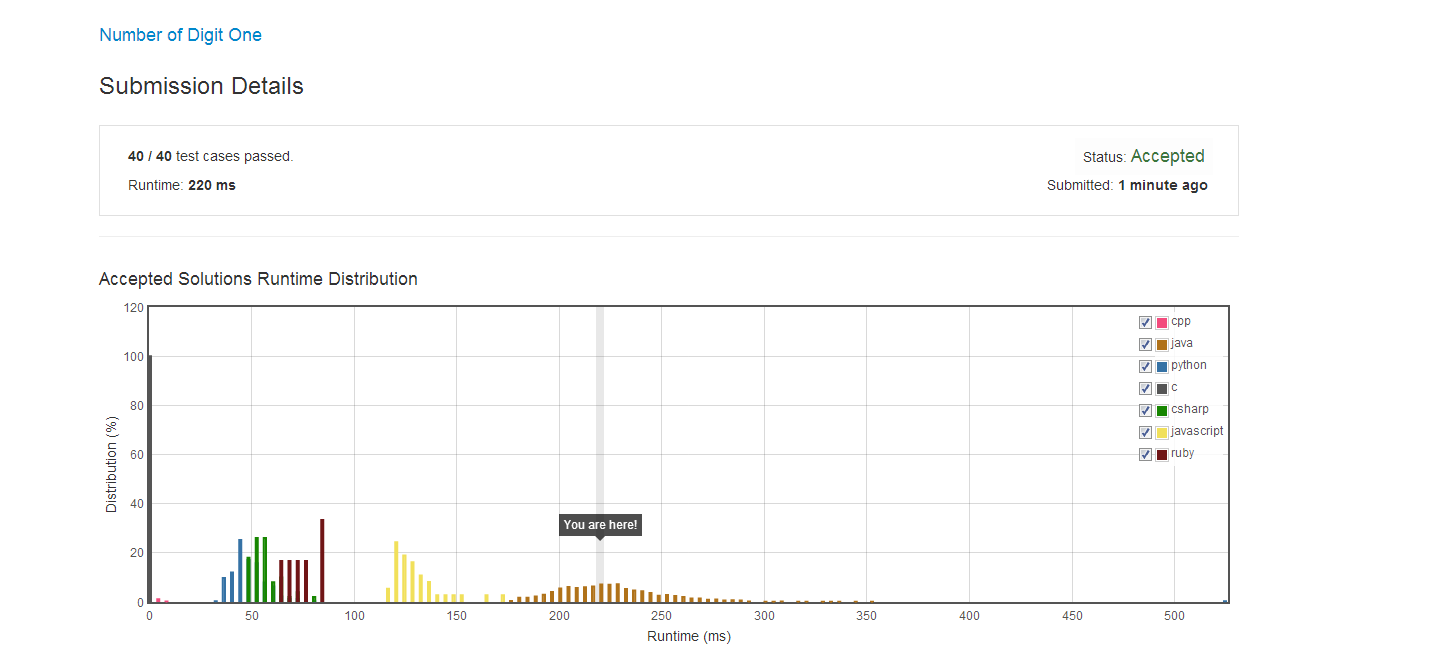Given an integer n, count the total number of digit 1 appearing in all non-negative integers less than or equal to n.
For example:
Given n = 13,
Return 6, because digit 1 occurred in the following numbers: 1, 10, 11, 12, 13.
解法:参考编程之美 132页 2.4 1的数目,以下代码中,注意iFactor有可能超越int所能表示的范围,故将其类型定义为long,为了避免过多的强制类型转换,其他变量也定义为long,但是iCurNum除外,switch()中变量不能为long类型。(以下以百位数1的个数为例)
百位数为0:百位数上可能出现的1的次数由高位决定,=更高位数*当前权值(100);受高位影响
百位数为1:=低位数字+1 +百位数为0的情况;受高位和低位影响
百位数大于1:(高位数+1)*当前权值(100);受高位影响
代码如下:
public class Solution {
public int countDigitOne(int n) {
if(n<=0) return 0;
long iCount=0;
long iFactor=1;
long iLowerNum=0;
int iCurrNum=0;
long iHigherNum=0;
while(n/iFactor!=0){
iLowerNum=n-(n/iFactor)*iFactor;
iCurrNum=(int)(n/iFactor)%10;
iHigherNum=n/(iFactor*10);
switch(iCurrNum){
case 0:
iCount=iCount+iHigherNum*iFactor;
break;
case 1:
iCount+=iHigherNum*iFactor+iLowerNum+1;
break;
default:
iCount+=(iHigherNum+1)*iFactor;
break;
}
iFactor*=10;
}
return (int)iCount;
}
}
运行结果:



